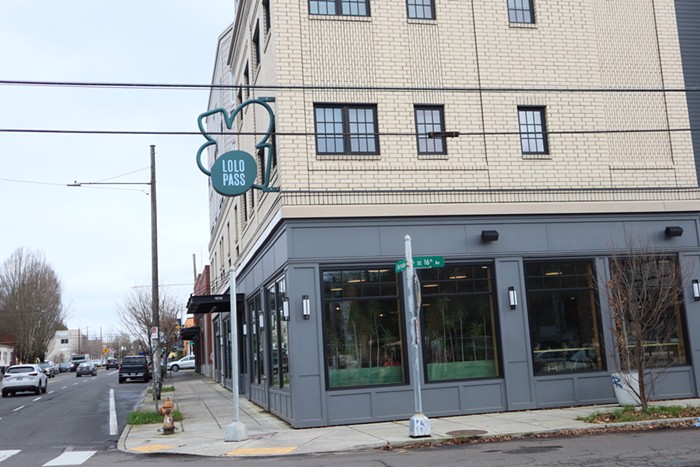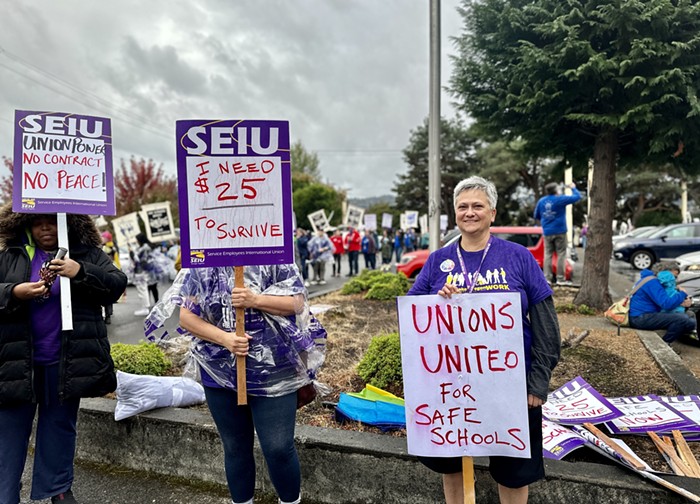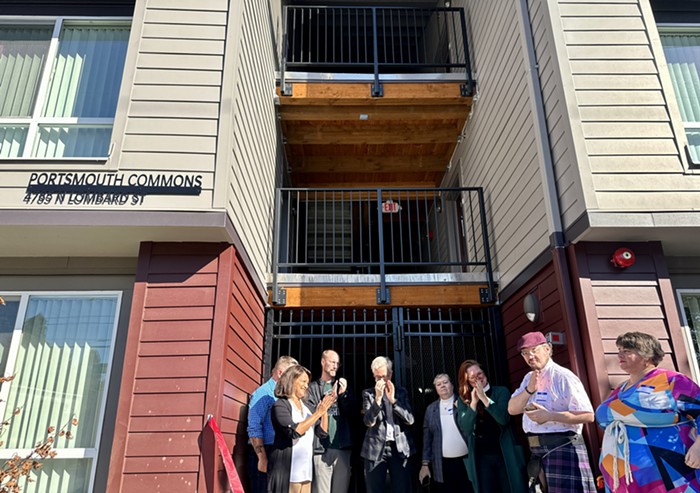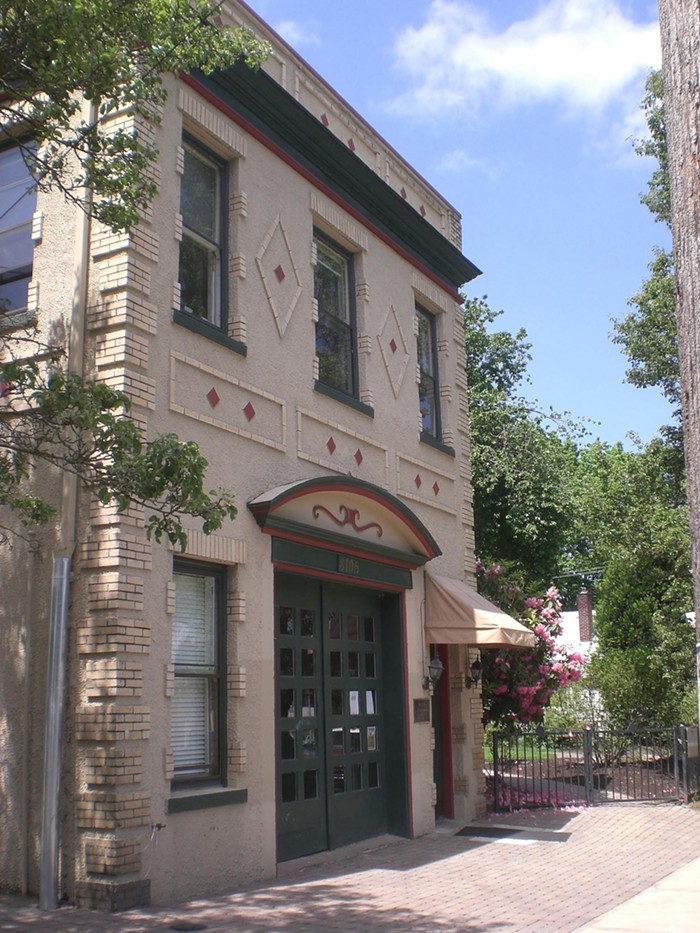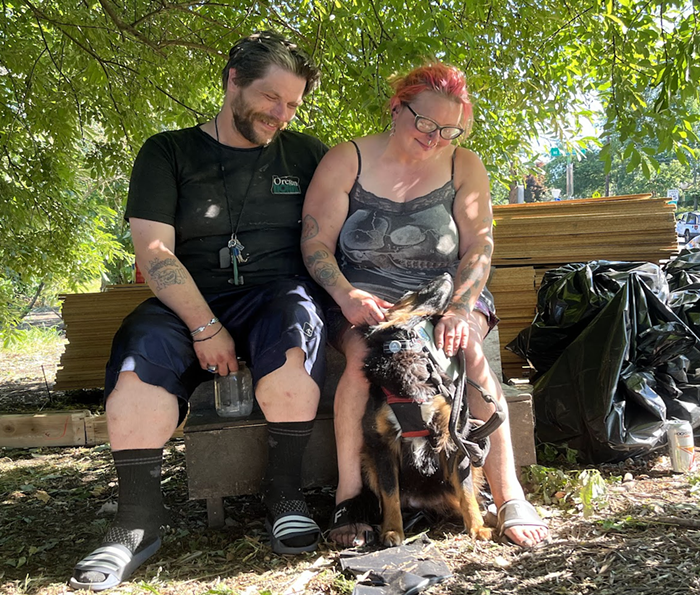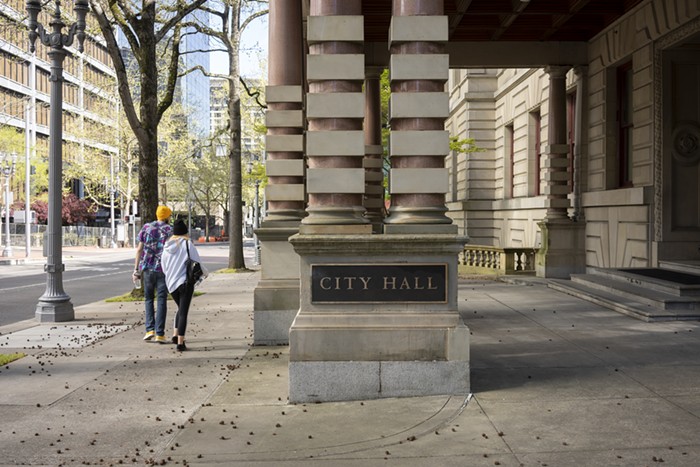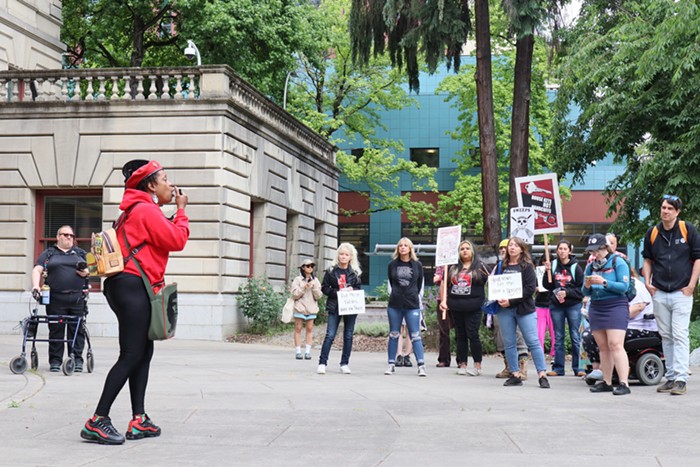THE HOUSE across the street from Judge Finklea's rental on N Vancouver is 115 years old, but it might not reach 116.
Local developer Lane Lowry bought the property for $551,000 last August. He plans to raze the home and detached garage on the double lot and replace the buildings with 54 market-rate apartment units, a move that has Finklea and his neighbors up in arms.
Finklea, 34, says the house should be saved. He would prefer to retain it on site, but thinks a house that old deserves to be moved and preserved rather than torn down. Finklea says Lowry doesn't care about preserving the Eliot neighborhood's integrity, and worries what the large apartment complex will do to the feel of the street he loves.
"People who move in and are living in apartments like that, they're not invested in the community," he says. "And the developer just wants to make more money, at the cost of those of us who've lived here and want to keep it the way it is."
This scenario is repeating itself again and again in Portland, as the demolition of old, single-family homes changes the fabric of neighborhoods. Developers and city planners say we need the increased density, while those seeing "old" Portland disappear are horrified by the skinny houses and apartments rising at a feverish pace as Portland scrambles to take advantage of a record-breaking stream of transplants. The Portland metro area's gained 600,000 people since 1995, and planners say hundreds of thousands more are on the way.
But Finklea's set on saving that house. And he's among the first to take advantage of a new Portland Bureau of Development Services (BDS) appeals process to block Lowry's plans—at least temporarily.
Under city code written decades ago, developers who wanted to demolish a single-family home and replace the structure with another home or apartment building weren't required to notify anyone. As long as the trade was straight across—one single-family home replacing another single-family home—or offered increased density, they just submitted an application, waited a mandatory 120 days, and received a permit once the city approved the project, according to Kareen Perkins, BDS' permitting services section manager.
In April, that changed. Now developers are required to notify neighbors living within a certain distance of a structure that's up for demolition, as well as staff at Restore Oregon—an organization committed to preserving historic buildings—and the Architectural Heritage Center.
"In the last few years, neighbors started becoming concerned about demolition, about the types of structures that were replacing the demolished houses, [and] what that did to neighborhood livability," Perkins says.
Now, after notifying the appropriate people, developers must wait 35 days before BDS will issue permits. If no one objects, the project begins. Finklea objected. In fact, he did more than that: He got the Eliot Neighborhood Association to object on his behalf—which saved him from having to pay the $1,318 appeal fee.
"If a neighborhood association files the appeal, city council picks up the tab," Perkins says. "When this code was enacted, Commissioner Amanda Fritz wanted to make sure there was a mechanism for people who couldn't afford the fee to be able to appeal."
Finklea's asking Lowry to let him buy or move the imperiled home. Lowry's not biting on either option—and he doesn't have to. City code doesn't require developers to accept either alternative, just wait it out for 60 more days.
"The house is rotten on the inside. Just because it was built 100 years ago doesn't mean it's worth saving," Lowry says. "This guy actually thinks he's helping, but it's irrational, because there's not a lot that can be done to block it."
Peggy Moretti, executive director of Restore Oregon, says developers who are eager to tear down and rebuild say that a lot.
"I can't tell you how many times we've heard a structure is too far gone, that it isn't worth saving," she says. "I've heard it hundreds of times and then seen those structures restored beautifully."
Moretti says the change BDS made to the demolition permitting process was needed and helpful, but in that stretch of N Vancouver, current zoning—and future zoning changes—encourage increased land prices, which, in turn, encourage developers to demolish and rebuild bigger and more expensive structures.
"But there's a way to do it without completely bulldozing what is there," she says.
Moretti says the city could implement design guidelines for infill projects to retain neighborhood character, or charge larger fees for dumping construction waste in landfills to make developers more mindful of what can be reused or repurposed. Right now, just 2 percent of a demolished home is usually salvaged, according to Restore Oregon.
Brandon Spencer-Hartle, Restore Oregon's senior field programs manager, says the city should take a "more nuanced" approach.
"As a community, we can't be so myopic in the way we value density at any cost," he says.
Lowry says he's tried to work with Finklea—offering to help build a community garden or make other neighborhood improvements—but that he's been met with resistance and hostility.
"He's not even a property owner; he's a renter with no money, no resources," Lowry says. "The area's just going to be up-zoned anyway, next year, and other property owners are waiting for that so they can redevelop. There will be eight-, 10-, 12-story apartments all around that area."
This article has been altered to remove a reference to Commissioner Amanda Fritz serving as housing commissioner.
Want to read more stories like this one? Check these out:
Pricing Out Portland's Artists Skyrocketing Rents are Pushing Out Portland's Most Vulnerable Out of Control. Why Rent Control Could Help Portland The Soft Sell. What Portland Can Do to Create Affordable Housing

